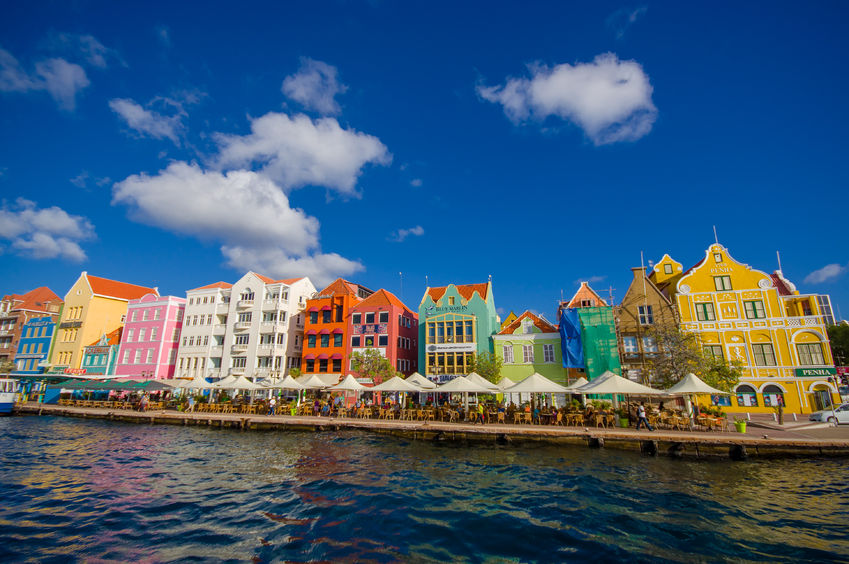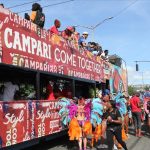
Located in the southern Caribbean Sea, Curacao is some 40 miles north of Venezuela and is part of the Kingdom of the Netherlands. A lieutenant linked to Christopher Columbus came to the island in 1499, and it received the Spanish name of “Corazon,” which means “heart” but the name appeared on a Portuguese map in 1511 as “Curacao,” which it has remained. This exotic location offers many attractions. Seven of the most popular are listed below.

1. Visit Mikvé Israel-Emanuel Synagogue
This is the oldest continually attended synagogue in the Americas. It has been in existence since 1732, and its pastel yellow building of neoclassical design stands out among the neighboring buildings. It is also distinguished for its sand floor, a reminder of the congregation’s ancestors who had to hide during the Inquisition and therefore muffled the sounds of their religious services. The synagogue currently serves some 145 families who preserve its heritage. The site also features the Jewish Cultural Historical Museum, which houses artifacts, photographs and stories of Curacao’s Jewish community
2. Go to Christoffel National Park
This undeveloped and rugged area of Christoffel National Park features many hiking trails and roads so visitors can choose to walk or drive through its landscape. It is possible to see wildlife like white-tailed deer and the island’s native barn owl on a visit. For the adventurous hiker, a climb up the 1,239 feet of the island’s highest peak Mount Christoffel is in order. Next door is another protected park, the Shete Boka National Park, which extends ten kilometers along the island’s rocky coastline and is a major nesting site for sea turtles.
3. Vest the Kurá Hulanda Museum
The Kurá Hulanda Museum houses the most comprehensive collection of African artifacts in the Caribbean region. It includes a detailed exhibit of the trans-Atlantic slave trade and explains the role of Curacao’s location for Dutch slave traders. There is a building devoted to the Middle Passage where a guide shares the horrific stories of capture and punishment of slaves in a display of branding tools, cages, and iron collars. An exact replica of a slave ship hull presents a glimpse of the conditions African captives had to endure.
4. Visit Klein Curaçao or “Little Curaçao”
This offshore island offers even more great beaches. After a boat ride of about 90 minutes across the sea, visitors reach a small coral island. There are no full-time residents here except for the blue whiptail lizards and hermit crabs who make interesting viewing. It features two miles of white sand and iridescent water. It is also possible to hike to a 19th-century lighthouse and the nearby wrecked ships that rest on the shore.
5. Explore Willemstad
This city is the capital of Curacao and a UNESCO World Heritage City. The city is divided by St. Anna Bay, with Punda to the east and Otrobanda to the west. Both are joined by the Queen Emma Bridge. Most of the city’s main attractions are found in Punda.
6. See Handelskade
Handelskade is the top attraction in the Punda side of Willemstad. Its waterfront features a row of colorful colonial Dutch houses. The houses date from 1817 after the Governor-general Albert Kikket, who believed his headaches were caused by the glare of white-painted buildings, ordered all houses to be painted in pastel colors of pink, blue and yellow. Victors can sit at one of the many outdoor cafes and enjoy a drink while watching the Queen Emma bridge open and close in response to passing ships in the harbor.
7. Tour the Hato Caves
The Hato Caves are near the Curacao airport, and were formed millions of years ago under the sea waters. In the Ice Age, the water levels dropped, giving rise to the island’s formation and exposing the caves. Tours of the caves are available every hour between 9 am and 4 pm and last about 45 minutes. Visitors can see the amazing limestone formations, waterfalls and pools, and numerous statues, the most famous of which is the Madonna. The caves are also home to a bat colony.
Photo source: 123rf







